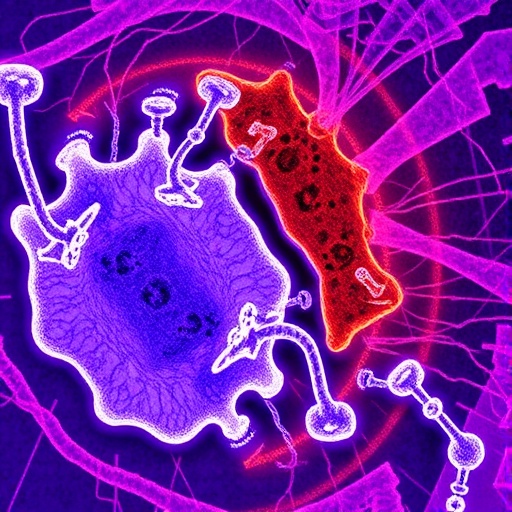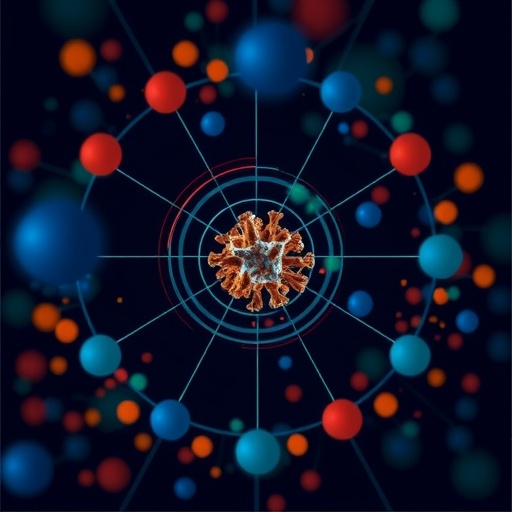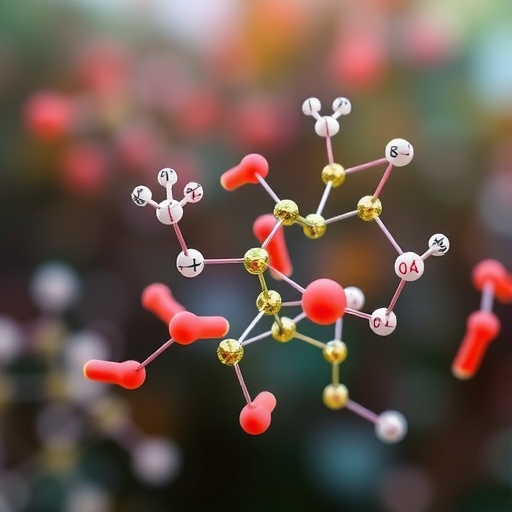High-grade endometrial carcinoma (HGEC) remains one of the most formidable challenges in gynecologic oncology due to its aggressive nature and resistance to conventional therapeutic regimes. Recent advances in molecular pathology, particularly the integration of histopathological evaluation with comprehensive genomic profiling, are forging new pathways for precise diagnosis and personalized treatment strategies. This breakthrough approach, anchored in the framework established by The Cancer Genome Atlas (TCGA), is revolutionizing how clinicians understand and manage these heterogeneous malignancies, promising to tailor interventions and improve patient outcomes in ways previously unattainable.
The histopathological diversity of HGEC encompasses several distinct subtypes, each with unique morphological and molecular characteristics. These include FIGO Grade 3 endometrioid carcinoma, serous carcinoma, undifferentiated and dedifferentiated carcinoma, uterine carcinosarcoma, clear cell carcinoma, and the rare mesonephric-like adenocarcinoma. Traditional microscopic assessments alone fail to capture the full biological complexity of these tumors, often leading to diagnostic ambiguities and suboptimal therapeutic decisions. However, when coupled with molecular profiling, these classifications offer a robust platform to discern tumor behavior, predict prognosis, and identify actionable molecular targets.
FIGO Grade 3 endometrioid carcinoma (HG-EEC) is marked by a predominance of solid architectural patterns exceeding 50%, frequently developing from a background of endometrial hyperplasia. These tumors typically harbor alterations in chromatin remodelers such as ARID1A, tumor suppressors like PTEN, and mismatch repair (MMR) proteins, with a subset exhibiting aberrant p53 expression patterns. This molecular heterogeneity underscores the dynamic pathogenesis of HG-EEC and necessitates a nuanced diagnostic approach to stratify risk accurately.
Serous carcinoma, often arising in atrophic endometrial tissue, epitomizes the high-grade category through its complex papillary structures and markedly atypical nuclei. The hallmark of this subtype is the near-universal mutation of TP53, categorizing it within the TCGA copy-number high (CNH) molecular group. This association correlates with aggressive clinical behavior and poor patient prognosis, highlighting the urgency for targeted therapeutic innovations that go beyond conventional chemotherapy.
Undifferentiated and dedifferentiated carcinomas represent some of the most lethal forms of HGEC, characterized by loss of epithelial cohesion and frequent disruptions in the SWI/SNF chromatin remodeling complex. These tumors often exhibit deficiencies in the DNA mismatch repair machinery or POLE mutations, contributing to their hypermutated status and potential susceptibility to immunotherapy. Their unique molecular signatures demand integration of genomic data into routine pathological diagnostics to unlock tailored treatment paradigms.
Uterine carcinosarcomas (UCS), biphasic tumors encompassing both carcinomatous and sarcomatous elements, share molecular commonalities with serous carcinoma, featuring frequent TP53 and PPP2R1A mutations. This overlap suggests shared oncogenic pathways and implicates similar molecularly targeted treatments. However, the clinical management of UCS remains challenging due to its aggressive course and limited therapeutic options, emphasizing the need for continued molecular characterization.
Clear cell carcinoma of the endometrium exhibits diverse architectural patterns, including tubulocystic, papillary, and solid formations, with tumor cells showing clear or oxyphilic cytoplasm. Immunohistochemical positivity for HNF-1β serves as a useful diagnostic marker. Molecularly, clear cell carcinomas straddle the CNH and no specific molecular profile (NSMP) groups in the TCGA classification, reflecting their biological heterogeneity and complex pathogenesis. This duality complicates prognosis and therapeutic stratification, necessitating further molecular dissection.
Among the rarer entities, mesonephric-like adenocarcinoma (MLA) is notable for its aggressive phenotype and complex histogenesis, straddling features of Müllerian and mesonephric differentiation. These tumors frequently harbor KRAS mutations and are predominantly classified within the copy-number low (CNL)/NSMP TCGA subgroup, representing a unique molecular niche with implications for targeted therapy development.
The TCGA classification system revolutionized endometrial cancer taxonomy by categorizing tumors into four definitive molecular subgroups: POLE-ultramutated, mismatch repair deficient (MMR-deficient) characterized by microsatellite instability, copy-number high (p53 abnormal), and copy-number low (NSMP). This molecular stratification correlates significantly with patient prognosis and therapeutic responsiveness. For instance, POLE-ultramutated tumors exhibit an ultra-high mutation burden associated with exceptional survival rates and enhanced immune cell infiltration, identifying them as candidates for immunomodulatory therapies.
MMR-deficient tumors, defined by hypermutation and microsatellite instability, occupy an intermediate prognostic tier. These tumors display a pronounced sensitivity to immune checkpoint inhibitors, positioning immunotherapy as a frontline option. In contrast, the copy-number high group, encompassing most serous carcinomas and carcinosarcomas, manifests aggressive clinical behavior driven primarily by TP53 mutations and extensive chromosomal aberrations. The therapeutic challenge within this cohort lies in overcoming inherent chemoresistance and identifying molecular vulnerabilities.
The copy-number low or NSMP group comprises a heterogeneous assemblage of tumors, including many endometrioid and clear cell carcinomas lacking defined molecular drivers like TP53 or MMR deficiencies. This heterogeneity necessitates further substratification using additional biomarkers such as L1 cell adhesion molecule (L1CAM) and CTNNB1 mutations to refine prognostic accuracy and guide therapy.
Although next-generation sequencing remains the definitive tool for molecular subtyping, resource limitations have stimulated reliance on surrogate immunohistochemical markers, including p53 and MMR proteins, facilitating broader clinical implementation. This pragmatic approach enables timely molecular risk stratification and informs therapeutic decision-making, such as immunotherapy suitability in POLE and MMR-deficient tumors or PARP and HER2 targeted treatments in CNH cases. However, the NSMP group continues to represent a diagnostic and therapeutic gray zone.
Looking forward, integrating comprehensive molecular diagnostics into standard pathological workflows faces hurdles including technological costs, accessibility, and the paucity of prospective clinical trials validating molecularly directed therapies. Harmonizing molecular testing protocols across institutions remains imperative to ensure consistent, reliable patient stratification. Furthermore, in-depth exploration of the NSMP subset and identification of novel molecular markers are critical research frontiers to optimize precision oncology in endometrial cancer.
The paradigm shift exemplified by the fusion of histological assessment and TCGA-based molecular signatures epitomizes precision medicine’s transformative potential. This integrated model transcends traditional morphology, delivering nuanced understanding of tumor biology that translates directly into clinical practice by informing risk-adapted surveillance and individualized therapeutic strategies. The evolving landscape offers renewed hope for patients battling high-grade endometrial carcinomas, historically associated with dismal outcomes.
By embracing molecular classification, clinicians can now predict disease trajectories more accurately and select targeted therapies that exploit distinct tumor vulnerabilities. Such advancements underscore the essential role of multidisciplinary collaboration, encompassing pathologists, molecular biologists, and oncologists, to interpret complex molecular data and implement personalized care plans effectively. As this integrative approach gains traction, it is poised to dismantle the therapeutic inertia that has long characterized the management of high-grade endometrial cancers.
In conclusion, the confluence of histopathology and molecular genomics as championed by TCGA constitutes a milestone in gynecologic oncology. It enhances diagnostic precision, prognostic delineation, and therapeutic tailoring for aggressive endometrial cancers. Continued research and clinical validation will refine molecular subtyping frameworks and foster innovative interventions, ultimately improving survival and quality of life for affected patients worldwide.
Subject of Research: High-grade endometrial cancer molecular and histopathological classification integrating TCGA framework
Article Title: Decoding High-grade Endometrial Cancer: A Molecular-histologic Integration using the Cancer Genome Atlas Framework
News Publication Date: 21-Jul-2025
Web References:
Journal of Clinical and Translational Pathology: https://www.xiahepublishing.com/journal/jctp
DOI link: http://dx.doi.org/10.14218/JCTP.2025.00021
Image Credits: Zaibo Li, Himani Kuma
Keywords: Endometrial cancer, high-grade endometrial carcinoma, TCGA classification, molecular pathology, precision oncology, histopathology, immunotherapy, TP53, POLE mutations, MMR deficiency
Tags: actionable molecular targets in cancerCancer Genome Atlas frameworkcomprehensive genomic profiling in oncologydiagnostic challenges in endometrial cancerFIGO Grade 3 endometrioid carcinomahigh-grade endometrial carcinomahistopathological evaluation of tumorsmolecular pathology in gynecologic oncologypersonalized treatment strategies for cancerserous carcinoma subtypestherapeutic advancements in HGECtumor behavior and prognosis prediction





